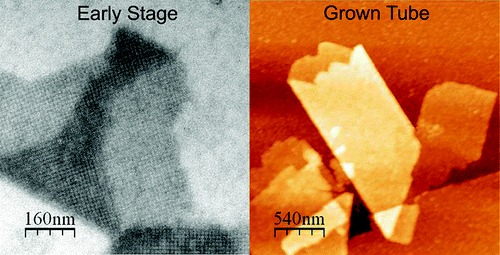Based on experimental studies on tube formation during self-assembly of bacterial surface (S)-layers, a mechanistic model for describing the underlying basic mechanisms is proposed and the effect of process parameters on growth velocity and tube radius is investigated. The S-layer is modeled as a curved sheet with discrete binding sites for the association of monomers distributed along the S-layer edges. Reported changes of the tube radius owing to genetic protein modifications are explained within the framework of continuum mechanics. S-layer growth velocity and shape development are analyzed by Monte Carlo simulation in their dependence on the attachment and detachment frequencies of monomers at the S-layer. For curved S-layer patches, a criterion for the formation of S-layer tubes is derived. Accordingly, tubes can form only within a certain range of the initial monomer concentration. Furthermore, the effect of calcium ion concentration on tube formation is discussed, including recent experimental findings on the calcium effect.

Based on experimental studies on tube formation during self-assembly of bacterial surface (S)-layers, a mechanistic model for describing the underlying basic mechanisms is proposed and the effect of process parameters on growth velocity and tube radius is investigated. The S-layer is modeled as a curved sheet with discrete binding sites for the association of monomers distributed along the S-layer edges. Reported changes of the tube radius owing to genetic protein modifications are explained within the framework of continuum mechanics. S-layer growth velocity and shape development are analyzed by Monte Carlo simulation in their dependence on the attachment and detachment frequencies of monomers at the S-layer. For curved S-layer patches, a criterion for the formation of S-layer tubes is derived. Accordingly, tubes can form only within a certain range of the initial monomer concentration. Furthermore, the effect of calcium ion concentration on tube formation is discussed, including recent experimental findings on the calcium effect.
